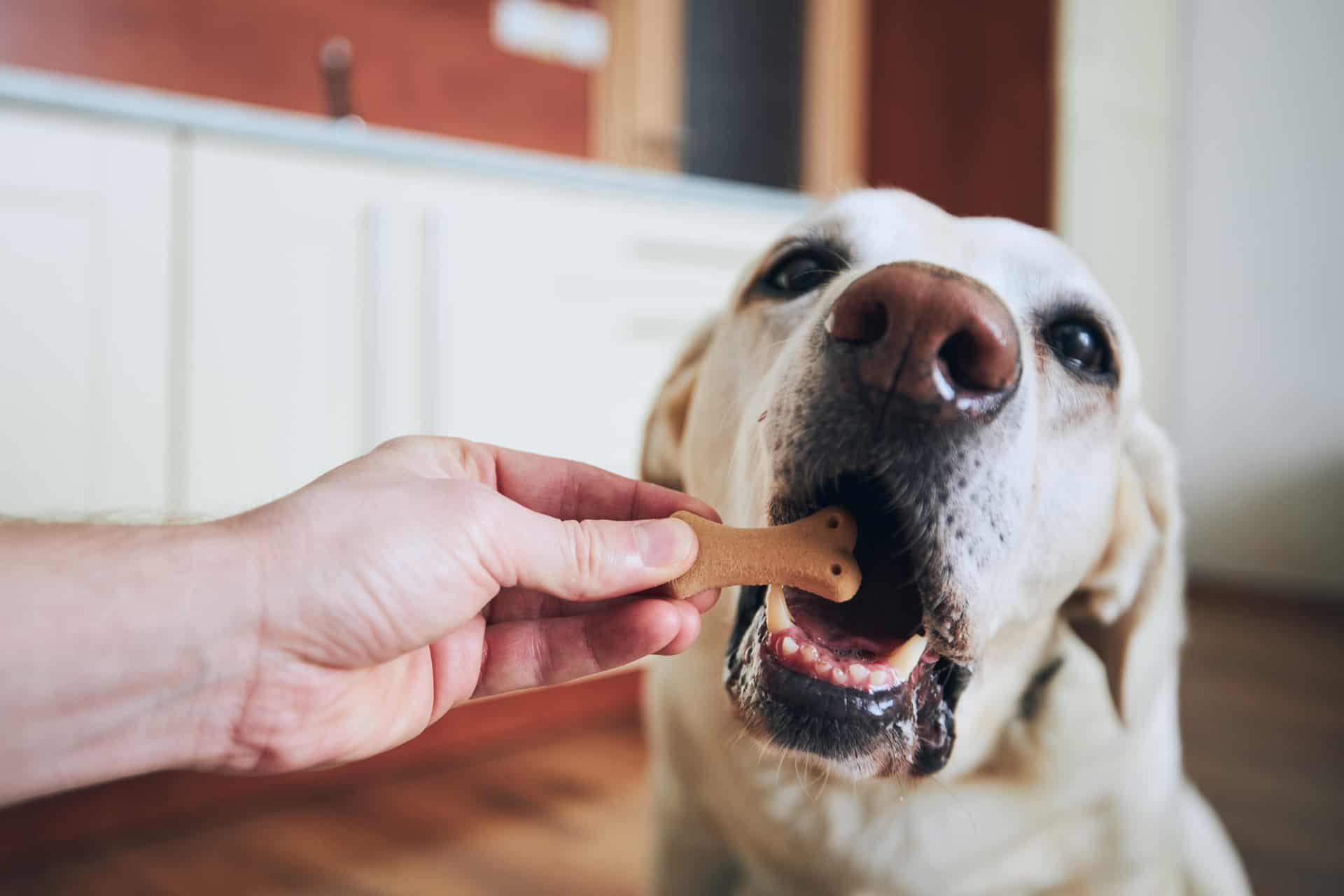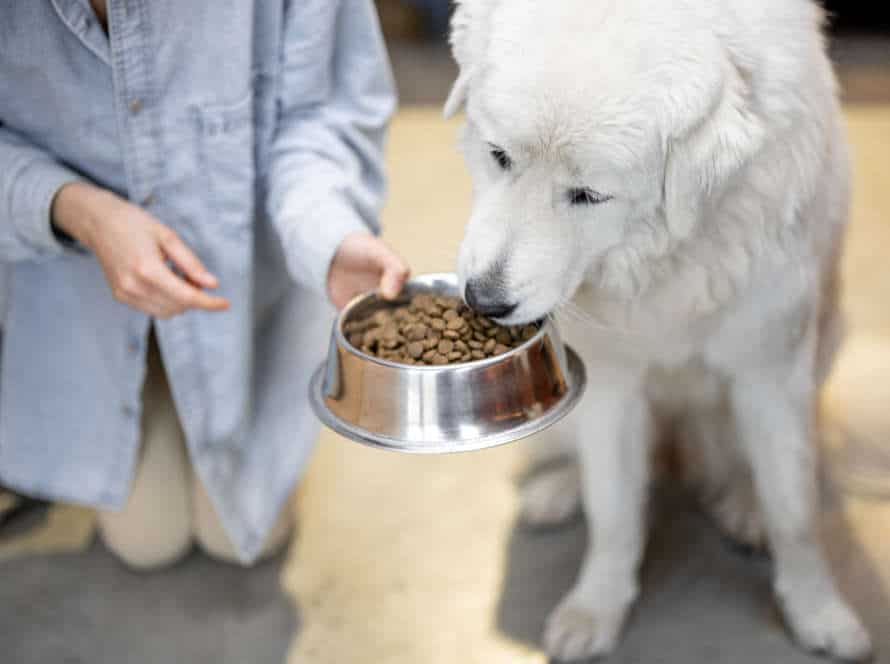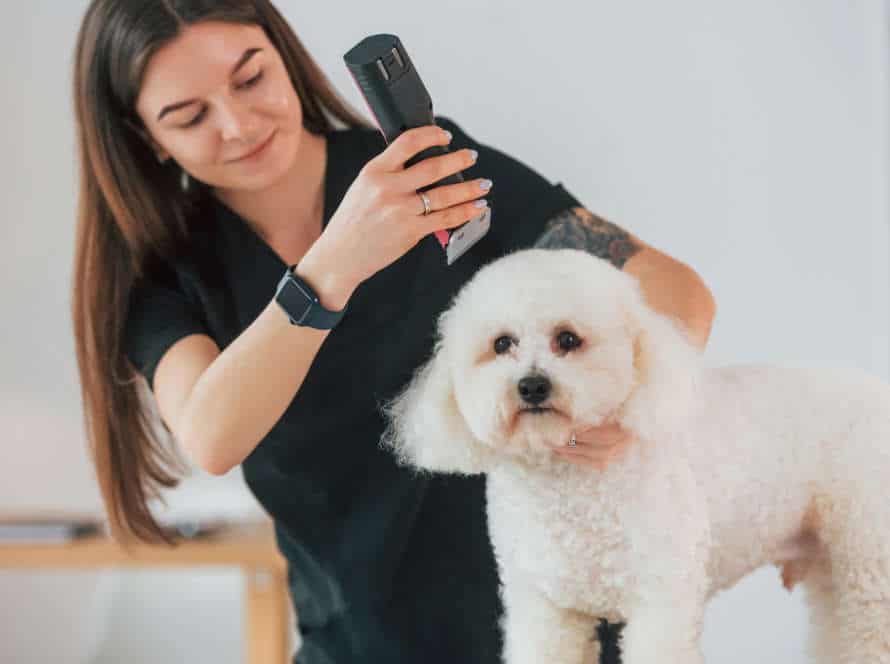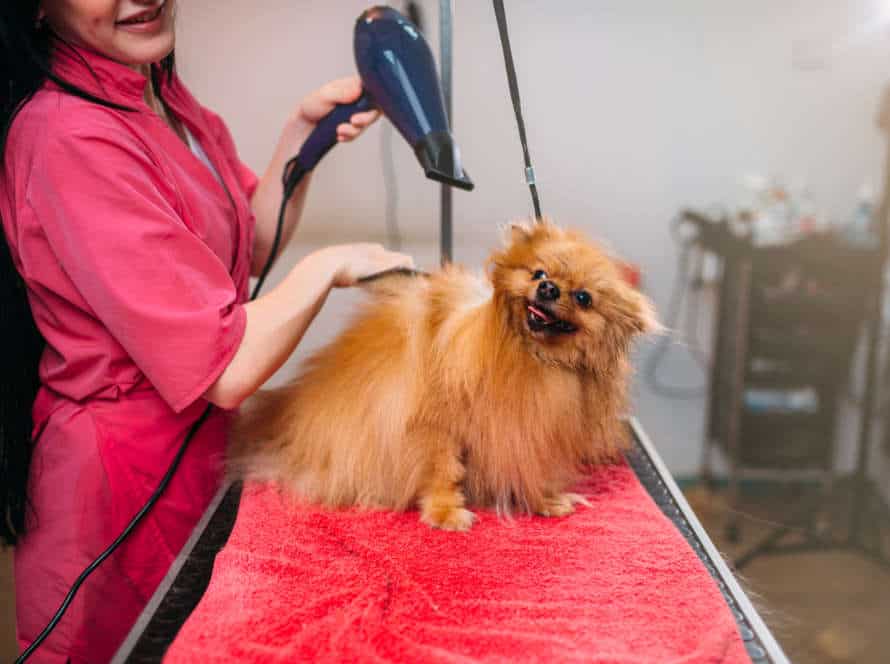How Positive Reinforcement Transforms Your Dog’s Behavior
Positive reinforcement is a great training tool that rewards good behavior, instead of punishing bad. Here’s how it works:
- Identify the behavior you want your pup to do, like sitting or coming when called.
- Give a treat or praise when they do it right.
- Repeat this process for several weeks until it becomes a habit.
- As time passes, give rewards less often.
Positive reinforcement creates a strong bond between you and your pup. Plus, it makes them happy and well-behaved.
Important: Don’t forget to be patient and consistent when using positive reinforcement – it can take a while for your dog to learn new behaviors.
The Importance of Reinforcement in Dog Training
Reinforcement is essential for training dogs. It can dramatically change the way your pup behaves. Positive reinforcement has been demonstrated to be one of the most effective ways to influence your dog’s behavior. It boosts the relationship between you and your pup, making it likely for them to obey your orders. Let’s take a closer look at how reinforcement works.
What is positive reinforcement?
Positive reinforcement is a training technique rooted in behavioral psychology. It rewards desirable behavior, encouraging its repetition. This technique is widely used in dog training. It helps build a strong bond between the dog and its owner and transforms behavior.
Here’s how it works: When the dog does the desired behavior, the trainer rewards it instantly with a treat, toy, or verbal praise. Consistent and immediate rewards motivate the dog to repeat the behavior. Over time, the dog understands that the behavior brings a reward.
Positive reinforcement training is a gentle and effective way to train a dog. Plus, it strengthens the relationship between dog and owner. Pro Tip: Saying “Good boy/girl” when rewarding the behavior strengthens the bond even more.
How does positive reinforcement work in dog training?
Positive reinforcement is essential in dog training. It helps to change their behavior with rewards. Rewards can be verbal praise, petting, treats, or toys. When dogs are given rewards for good behavior, they are more likely to keep doing it. This connection between behavior and reward will result in a well-behaved, obedient, and confident dog.
Pro Tip: Consistency is key. Rewards should be given right away to show the connection between behavior and reward.
Why is positive reinforcement better than punishment-based training methods?
Positive reinforcement-based dog training is better than punishment-based. Why? Rewards are given for desired behaviors, creating a positive atmosphere. This strengthens the bond and reduces bad behavior.
Punishment-based methods use scolding. This causes fear, aggression and more bad behavior.
Positive reinforcement has been used for decades by experts. It helps with obedience, behavior and overall well-being.
Reinforcement Techniques
Positive reinforcement is a great tool for dog owners! It’s easy to use and can have amazing effects on your pup’s behavior. The idea is to reward desired behaviors and ignore the undesired ones. We’ll discover some of the reinforcement techniques available to you as a dog owner in this article.
Clicker training
Clicker training is popular. It uses positive reinforcement to change your dog’s behavior. It’s based on classical and operant conditioning.
Here’s how it works:
- Link the clicker sound to a treat or reward. Click, then give a treat.
- Use the clicker to mark the behavior you want. For example: click when your dog sits.
- Follow the click with a treat or reward.
- Repeat, introducing verbal cues, reducing treats.
You can use clicker training to teach your dog many behaviors. Pro Tip: Be consistent and patient. Always use positive reinforcement for good behavior.
Treat-based training
Treat-based training is a great way to positively reinforce good behavior in dogs. With rewards like treats, it can help dogs learn new behaviors and repeat desirable ones. Here’s how it works:
- Identify the behavior you want your pup to learn.
- Reward them with a treat each time they do it correctly.
- Consistently and frequently repeat this process.
- Gradually decrease the treat frequency until they learn the behavior without needing a reward.
Positive reinforcement training is a great and humane way to build a strong relationship between you and your pup.
Pro tip: Give your pup high-quality treats for even better results and a more enjoyable experience!
Praise-based training
Praise-based training is a technique that uses positive reinforcement. It can change your pup’s behavior by rewarding the things they do correctly, instead of punishing something wrong.
How does it work? Catch them doing something good and reward them with petting, treats, or words of praise.
- Be consistent with rewarding them and ignore bad behavior.
- Speak in a firm, friendly tone to get their attention and motivation.
- Don’t punish them, but instead, switch their focus to something positive.
- Be patient and keep it up; it’s a gradual, ongoing process.
Common Behavior Problems and How Positive Reinforcement Can Help
Dog training is all about better behavior. Positive reinforcement, like treats, praise, or playtime, can help you get there. Let’s look at common behavior issues and see how positive reinforcement can help your beloved dog!
Excessive barking
Excessive barking is a regular issue for pups. Positive reinforcement techniques can help change your dog’s behaviour.
Barking is how doggies communicate, but too much barking can be troublesome. Positive reinforcement uses praise, treats, or playtime to reward good behaviour.
Here are some tips to reduce excessive barking in dogs:
- Figure out what triggers your dog’s barking and remove or reduce it.
- Teach your dog a “quiet” or “speak” command, and reward them when they respond correctly.
- Don’t yell or punish your pup for barking, as it may make the behaviour worse.
- Be consistent with training and patient with progress.
Bonus: Positive reinforcement training can strengthen your relationship with your pup, and help you both communicate better.
Aggression towards people or other dogs
Aggression – whether towards people or other dogs – can be managed with positive reinforcement training.
Rewarding good behavior, instead of punishing bad, helps your dog to make a positive link in their mind.
Some positive reinforcement techniques are:
- Counter-conditioning: Expose them to the situation gradually, and reward calmness.
- Desensitization: Gradually expose your dog to a stimulus, and reward them for staying calm.
- Clicker training: Use a clicker to signal when they’ve done something right, then give a reward.
With consistent positive reinforcement, your dog’s behaviour can be transformed and aggression reduced or even gone!
Destructive behavior
Dogs’ destructive behavior is a common problem for many pet owners. It can be caused by boredom, confusion, or anxiety. Positive reinforcement can help transform this bad behavior into good.
For example, if your pup chews furniture, don’t punish them. Instead, show them an appropriate toy or treat. When they engage with it, reward them with praise and love.
Give your doggo enough physical exercise and mental stimulation. This can stop boredom and restlessness, which often cause destructive behavior.
Positive reinforcement not only corrects wrong behavior, but also builds trust and strengthens the bond between you and your pup. Remember, a little positive reinforcement can go a long way in changing your dog’s behavior.
Incorporating Positive Reinforcement into Your Training Routine
Positive reinforcement is a powerful tool to train your pup. It’s been proven to be one of the best ways to shape their behavior. This can help build a stronger bond between you and your four-legged friend. Let’s dive in and talk about how positivity can bring out the best in your pup!
Setting goals and expectations for training
When training your pup, setting goals and expectations is a must-do. Here are a few tips to get you started:
- Figure out what behavior you want your dog to learn or improve.
- Set attainable and realistic goals which can be broken into smaller pieces.
- Identify what rewards work best for your pup, like treats, toys, or praise.
- Monitor your pup’s progress and adjust the goals as needed.
- Have patience and stay consistent in your training.
Incorporating positive reinforcement techniques, like rewarding good behavior and ignoring bad behavior, can make training fun for both of you. A pro tip – don’t forget to celebrate small wins to stay motivated!
Timing with reinforcement
Accurate timing is essential when it comes to employing positive reinforcement in dog training. It’s critical to give the reward at the precise moment a desirable behavior is displayed, in order to strengthen it and make it more probable that it will happen again.
Here are a few tips to ensure the right timing with reinforcement:
- Utilize a marker word, such as “yes,” to denote the precise time the desired behavior is taking place. Then, provide a reward.
- Keep your rewards close and in small sizes to deliver them quickly and effortlessly.
- Watch your dog’s particular speed and processing power to guarantee that the reward follows the behavior instantly.
Timing in conjunction with positive reinforcement can alter your dog’s behavior by creating a positive and rewarding learning atmosphere.
Consistency in training
Consistency is key when you’re training your pup with positive reinforcement. This method can change your pet’s behavior for the better in the long run.
Incorporating positive reinforcement into your routine? Here’s what ya gotta do:
- Identify the desired behavior in your dog.
- Then, reward ’em with treats, praises, or toys straight away.
- Use verbal cues or hand signals consistently to reinforce the behavior.
- Be patient and consistent with your training, and up the difficulty level slowly.
- Be sure to stay positive and avoid punishment-based training, which can damage your pup’s emotional wellbeing.
- Know your dog’s temperament and character – Some dogs prefer positive reinforcement, others may need an assertive approach.
- Opt for the right timing – Time is essential in dog training. Provide prompt and consistent reinforcement to ward off confusion.
- Positive reinforcement – Utilize rewards such as goodies, toys, and appreciation to modify your dog’s behaviour and develop a closer connection.
- Disregard negative reinforcement – Punishment isn’t beneficial and may cause aggression or fear.
- Be patient and consistent – Consistency is key to any successful dog training program. Take your time and move at your dog’s pace.
- Know your dog’s personality and habits.
- Experiment with different rewards to find what motivates them the most.
- Reinforce good behavior regularly.
- Avoid punishing or negative reinforcement. It could do more harm.
- Excessive barking or growling.
- Fear or aggression towards people or other animals.
- Chewing or digging destructively.
- Running away or not listening.
Pro tip: Positive reinforcement training takes patience, consistency, and positivity. Don’t give up on your dog and keep reinforcing their good behavior in a consistent way.
Choosing the Right Reinforcement Strategy for Your Dog
Positive reinforcement is a strong way to change your pup’s habits. You can use it to train them new things, reduce bad behaviors, and boost good ones. To make this work for your dog, you must understand the different reinforcement methods and pick the one that fits their particular needs.
Factors to consider when choosing a reinforcement technique
When selecting a reinforcement system for your pup, take into account multiple factors to decide which one works best for their character and needs. These are the main ones:
By thinking about these components, you can pick a reinforcement technique that can help build a strong bond with your pup and improve their behaviour.
Adapting your training to your dog’s personality and behaviors
Training your furry pal needs a tailored approach. It depends on their unique personality and behavior. Get to know your pup and use the right reinforcement strategies for the best outcome.
Positive reinforcement is a common training method. It rewards good behavior with treats, compliments, or cuddles instead of punishing bad behavior.
Tips for the right reinforcement strategy:
By using positive reinforcement, understanding your pup, and reinforcing good behavior consistently, you can make your furry friend a well-behaved companion.
When to seek professional help with dog behavior training.
It can be tricky for pet owners to know when to get professional help for dog behavior training. If your pup is displaying aggressive actions or destructive habits that you can’t manage, it could be the time to call a qualified dog trainer.
Signs that you may need professional help include:
Positive reinforcement is a very successful way of training your pooch. This method involves giving treats, toys, or compliments to award good behavior. By focusing on positive reinforcement and giving rewards for good behavior, pet owners can educate their dogs to develop and keep positive behaviors.
Pro Tip: Be patient and consistent with training and don’t be afraid to ask an expert if you need assistance.
Frequently Asked Questions
Q: What is positive reinforcement?
A: Positive reinforcement is a training method that involves rewarding your dog for good behavior, rather than punishing them for bad behavior. It can involve treats, praise, and other forms of positive feedback.
Q: How does positive reinforcement work?
A: Positive reinforcement works by creating positive associations in your dog’s mind between good behavior and rewards. Over time, this can shape your dog’s behavior and lead to a well-behaved and happy pet.
Q: What are some common examples of positive reinforcement techniques?
A: Common examples of positive reinforcement techniques include giving treats or praise when your dog performs a desired behavior, using clicker training, and giving your dog access to their favorite toys or games as a reward for good behavior.
Q: Are there any negative consequences to using positive reinforcement?
A: When used correctly, positive reinforcement is a safe and effective training technique that can transform your dog’s behavior. However, it’s important to use positive reinforcement consistently and avoid inadvertently rewarding bad behavior.
Q: Can positive reinforcement be used for all types of dogs?
A: Positive reinforcement can be used on all types of dogs, regardless of breed, age, or temperament. With patience and consistency, even the most challenging dogs can be trained using positive reinforcement techniques.
Q: How long does it take to see results with positive reinforcement training?
A: The amount of time it takes to see results with positive reinforcement training will vary depending on your dog’s personality and behavior issues. However, most dogs show improvement within a few weeks of consistent training.







